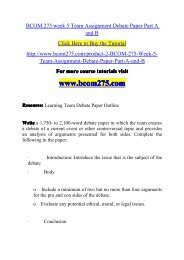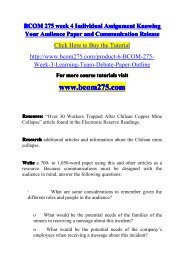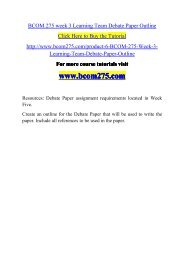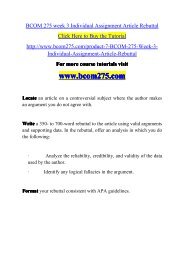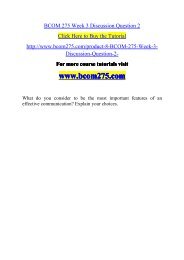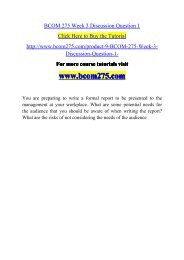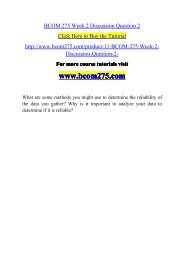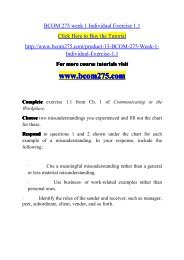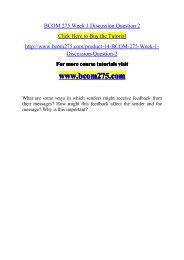BCOM 275 Final Exam Guide 4.-bcom275dotcom
For more course tutorials visit www.bcom275.com 1) The term channel in communication means A. the medium through which a message travels from sender to receiver B. the context of the communication C. the volume at which a message is received D. the process of changing thoughts into symbols 2) This preparation process involves looking at the characteristics of the receivers of the sender’s message. A. Determining the message B. Audience analysis C. Channel evaluation D. Receiver response analysis 3) A receiver’s response to a sender’s message is called A. channel B. feedback C. encoding D. decoding 4) This act is involuntary and happens automatically.
For more course tutorials visit
www.bcom275.com
1) The term channel in communication means
A. the medium through which a message travels from sender to receiver
B. the context of the communication
C. the volume at which a message is received
D. the process of changing thoughts into symbols
2) This preparation process involves looking at the characteristics of the receivers of the sender’s message.
A. Determining the message
B. Audience analysis
C. Channel evaluation
D. Receiver response analysis
3) A receiver’s response to a sender’s message is called
A. channel
B. feedback
C. encoding
D. decoding
4) This act is involuntary and happens automatically.
- No tags were found...
You also want an ePaper? Increase the reach of your titles
YUMPU automatically turns print PDFs into web optimized ePapers that Google loves.
C. team meeting<br />
D. text message<br />
19) When using expert testimonials, speakers should do which of the following?<br />
A. Always quote the expert’s exact words.<br />
B. Share the expert’s credentials.<br />
C. Use experts who have celebrity status.<br />
D. Protect the identity of experts by not naming them.<br />
20) Which verbal support breaks down complex processes or concepts into their<br />
component parts to ensure understanding?<br />
A. Comparisons<br />
B. Analyses<br />
C. Definitions<br />
D. Descriptions<br />
21) What type of language is used when communicating with classmates,<br />
coworkers, family, and friends?<br />
A. Official<br />
B. Informal<br />
C. Ceremonial<br />
D. Formal<br />
22) The connotation of words such as skinny or thin focuses on the<br />
A. actual meaning<br />
B. denotative meaning<br />
C. contextual meaning<br />
D. emotional meaning<br />
23) The individuals you are most likely to influence with your persuasive<br />
presentation are referred to as your<br />
A. peer audience<br />
B. leading audience<br />
C. target audience



